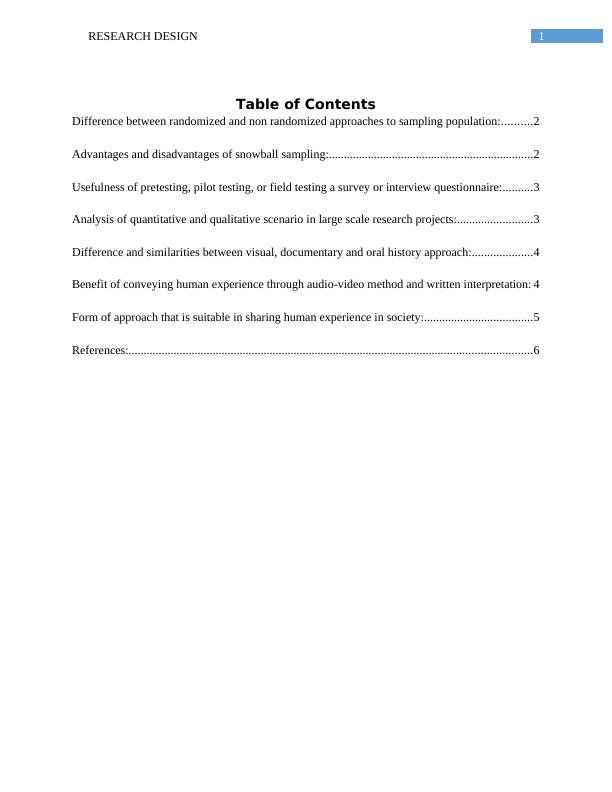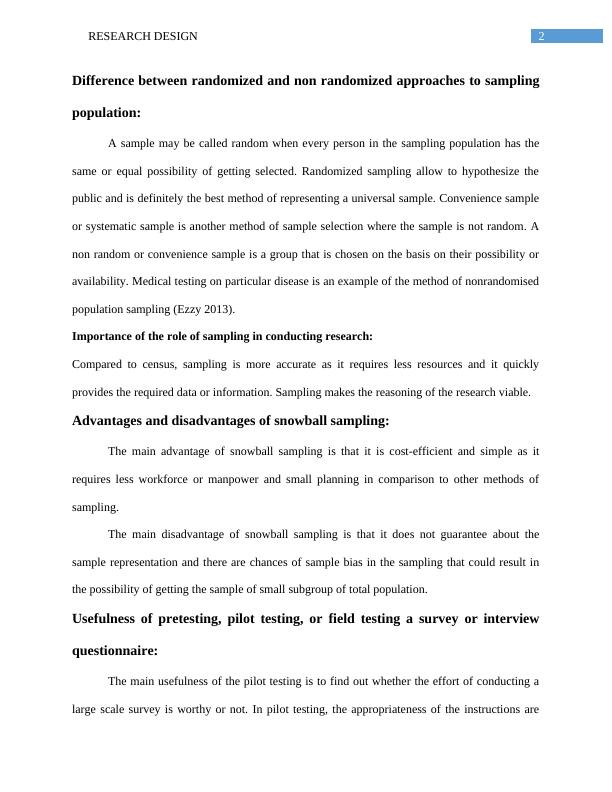Research Design: Sampling, Pilot Testing, Quantitative and Qualitative Analysis, Visual, Documentary and Oral History Approach
Added on 2023-06-05
7 Pages1289 Words363 Views
End of preview
Want to access all the pages? Upload your documents or become a member.
Marketing Research Report
|22
|3211
|360
SOC 333 Research Methods Week 4 Post Response
|4
|709
|224
Employee Appraisals: Face-to-face vs Software Applications
|4
|701
|88
Public Health Research Project 2022
|4
|512
|22
Effectiveness of Research Methods
|23
|6275
|11
A study of the restaurants naming food for friends project
|21
|3715
|133



